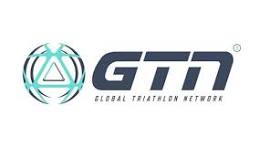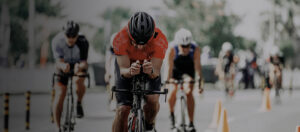Worried about what to eat on marathon race day? Try this race-day fuelling strategy that will see you shave minutes off your marathon time…
When Kenyan Eluid Kipchoge became the first human to run under 2hrs for his unofficial marathon in October 2019, he averaged a staggering 4:33min/mile on his way to 1:59:40. That’s a pace few of us can handle for one mile let alone 26.2.
Kipchoge’s exploits were made possible by years of training, a team of 41 pacemakers and, according to the New York Times, “a breakfast of oatmeal”. He’d also spent his month-long training camp in the build-up deriving a significant proportion of his calories from rice, potatoes and beans.
Why? Well, as we’ve mentioned, carbohydrates are the key race-fuelling macronutrient. But let’s focus on its macronutrient bedfellow, fat, to explain why.
FatMax is the exercise intensity at which fat oxidation peaks and is a concept of noted exercise physiologist, Professor Asker Jeukendrup. Each of us burns carbohydrates, fat and even protein at slightly different rates but, broadly, FatMax is around 65% of maximum heart rate. Once we’re exercising over this intensity, you can’t absorb enough oxygen quick enough to burn as much fat so your body switches to burning more carbohydrates for energy.
The harder you run, the more your body’s reliant on carbohydrates and less so on fats. And this is why fuelling with carbohydrates in the build-up to your marathon – and on race day itself – is so important. While one pound of fat contains 3,500 calories, your body can only store 500g of carbohydrate. It does this in the form of glycogen. But this is the maximum.
Race Day Breakfast
If you don’t fuel sufficiently before a marathon, your glycogen stores could nestle at 200-300g (instead of a potential 500g). Each gramme of carbohydrate provides just four calories (compared to nine from 1g of fat. This means a runner not fuelling proficiently with carbohydrates has only 800-1,200 glycogen calories.
Take this into race day where you could be racing at over 75% of your maximum heart rate for up to five hours. Say you’re burning over 400 calories an hour from carbohydrate, it’s clear to see that the finish line may remain eternally absent as you’d have bonked way before the end.
Yes, you can top up your nutrition during the race – we’ll come onto that – but that’ll still be insufficient if you don’t fuel well beforehand via Kipchoge’s template.
When it comes to breakfast, that template includes Kipchoge’s oatmeal but we’d also recommend porridge with honey or toast and jam. The key is to balance fuelling with lightness. If you have a hankering for a Chicken Tikka Masala, think again as your digestive system will upset you and your race plans an hour or two later.
Me personally? I have two or three PowerBar Energize bars (3 hours before) and I sip 250ml of Maurten 320 energy drink. It’s not to everyone’s tastes, but it’s full of carbs and saves the hassle of early-morning hotel breakfasts.
Science of Race Fueling
When it comes to the race itself, sip on an energy drink while you’re warming up and approaching the start zone. Not only will this deliver extra energy in the form of glucose (which would be converted to glycogen if you weren’t about to run a marathon), it’ll also give you a psychological boost. Research has shown that the thought of ingesting carbohydrates releases dopamine, the happy hormone.
It’s why mouth rinsing with carbohydrate has been proven to have a performance effect. In turn, exercise feels easier, albeit not for the full length of a marathon!
When it comes to which drink, the first consideration has to be taste. No matter how proven the science is behind certain products, if it makes you gag, you’ll be running nowhere. The most popular energy products of recent times is Maurten, which was used by Kipchoge in his record-breaking attempt. We’ve also tried it and its pretty neutral taste is appreciated.
Maurten’s USP isn’t down to taste but its structure, specifically its hydrogel coating. This is produced from alginate (from brown algae) and pectin (found in fruits). The idea is that hydrogel, though fluid in your bottle, transforms into a jelly-like substance in the acidic environment of your stomach, which results in smoother transport of carbs to the intestine where the carbs can be absorbed. This, say Maurten, reduces the chances of an upset stomach.
We’ve certainly had no issues. If you fancy giving Maurten a go – and always test in training first – they’d recommend a light breakfast along with 250ml of Maurten 320 drink. Half an hour before your race start, drink the remaining 250ml of Maurten 320 drink.
Why Maurten’s also caught the attention of runners all around the world is that by protecting the stomach, in theory you can absorb and assimilate more carbohydrate than was previously presumed. You see, for years sports scientists thought that 60-70g of carbohydrates per hour was the most you could ingest. This was down to transporters in the intestine, which become saturated at that point and couldn’t carry any more glucose into the bloodstream.
But then Professor Jeukendrup had the idea of adding fructose to the glucose solution because fructose uses a different intestinal transporter. Jeukendrup’s results meant nutritionists could deliver up to 90g of carbohydrate an hour without causing gastro issues.
Upping from 60g to 90g and you’ll ingest an extra 120 calories over the glucose only option. That means taking in an extra 360 calories per hour against just 240 calories. Add that up over a 4hr marathon and, theoretically, that’s an extra 480 calories to fuel you.
The problem is, many recreational runners can’t stomach this 90g figure. That’s where Maurten potentially comes in. Their 320 product contains 80g of carbohydrates per serving and, thanks again to the hydrogel, is less likely to cause things like stomach cramps.
That said, you can train your gut like you can train performance parameters like endurance and speed. Further work by Jeukendrup showed that training with relatively large volumes of fluid or immediately after a meal helps your stomach acclimatise to consuming more carbohydrates, albeit is uncomfortable.
Gels or No Gels?
Ultimately, your hourly calorie count is individual – as is how this breaks down into energy drink, gels and/or chews. As an example, two gels offer 60g of carbs an hour. Or a 500ml water bottle filled with 7% carb solution equates to 35g of carbs. So one bottle and a gel again roughly ticks off that 60g figure.
It’s down to you to try in training but, according to Owen Anderson in his acclaimed Running Science tome, you’re better off with drinks than gels. In it, Anderson calculates that ingesting an energy gel with water increases the chances of gastro discomfort. This, he continues, is potentially worse when mixed with energy drinks because the carbohydrates from both could mix together and ‘form a molasses-like mixture’.
Then again, Anderson wrote this in 2013. Since then, gels have become more refined. There’s also been a surge of isotonic gels that don’t require a water chaser. SiS is one of the key proponents of this form of gel and has been core to their global success. Either way, consuming around 20-30g of carbohydrates every 20mins will take stress of your stomach as well as drop-feeding glucose into your bloodstream.












